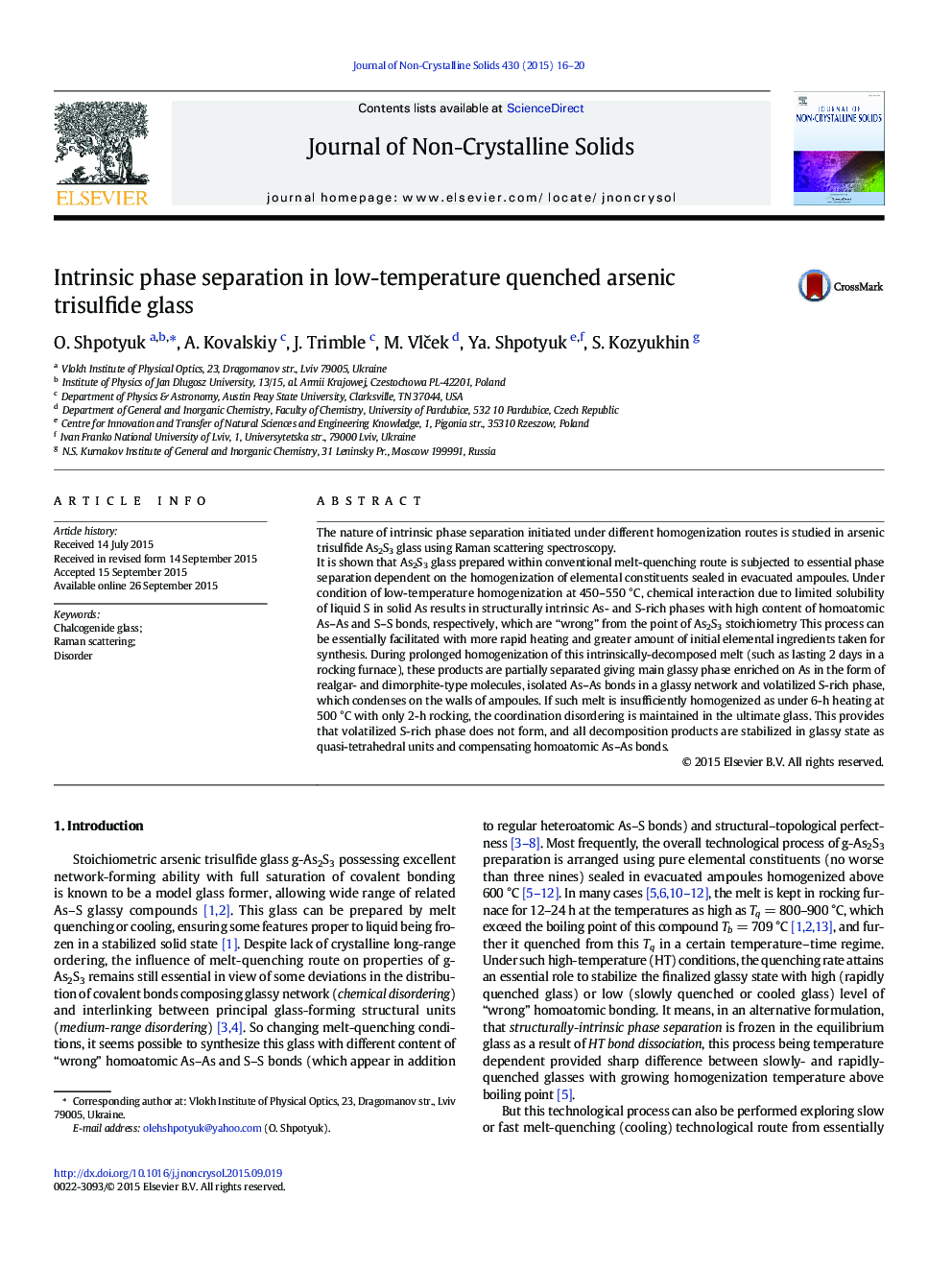| کد مقاله | کد نشریه | سال انتشار | مقاله انگلیسی | نسخه تمام متن |
|---|---|---|---|---|
| 1480462 | 1510414 | 2015 | 5 صفحه PDF | دانلود رایگان |
• Intrinsic phase separation in binary As–S glasses near As2S3 stoichiometry
• Chemical disorder in glassy As2S3 under rapid quenching from high temperatures
• Phase demixing in As2S3 glass under prolonged low-temperature homogenization
• Coordination disordering in As2S3 glass under reduced low-temperature homogenization
The nature of intrinsic phase separation initiated under different homogenization routes is studied in arsenic trisulfide As2S3 glass using Raman scattering spectroscopy.It is shown that As2S3 glass prepared within conventional melt-quenching route is subjected to essential phase separation dependent on the homogenization of elemental constituents sealed in evacuated ampoules. Under condition of low-temperature homogenization at 450–550 °С, chemical interaction due to limited solubility of liquid S in solid As results in structurally intrinsic As- and S-rich phases with high content of homoatomic As–As and S–S bonds, respectively, which are “wrong” from the point of As2S3 stoichiometry This process can be essentially facilitated with more rapid heating and greater amount of initial elemental ingredients taken for synthesis. During prolonged homogenization of this intrinsically-decomposed melt (such as lasting 2 days in a rocking furnace), these products are partially separated giving main glassy phase enriched on As in the form of realgar- and dimorphite-type molecules, isolated As–As bonds in a glassy network and volatilized S-rich phase, which condenses on the walls of ampoules. If such melt is insufficiently homogenized as under 6-h heating at 500 °C with only 2-h rocking, the coordination disordering is maintained in the ultimate glass. This provides that volatilized S-rich phase does not form, and all decomposition products are stabilized in glassy state as quasi-tetrahedral units and compensating homoatomic As–As bonds.
Journal: Journal of Non-Crystalline Solids - Volume 430, 15 December 2015, Pages 16–20
